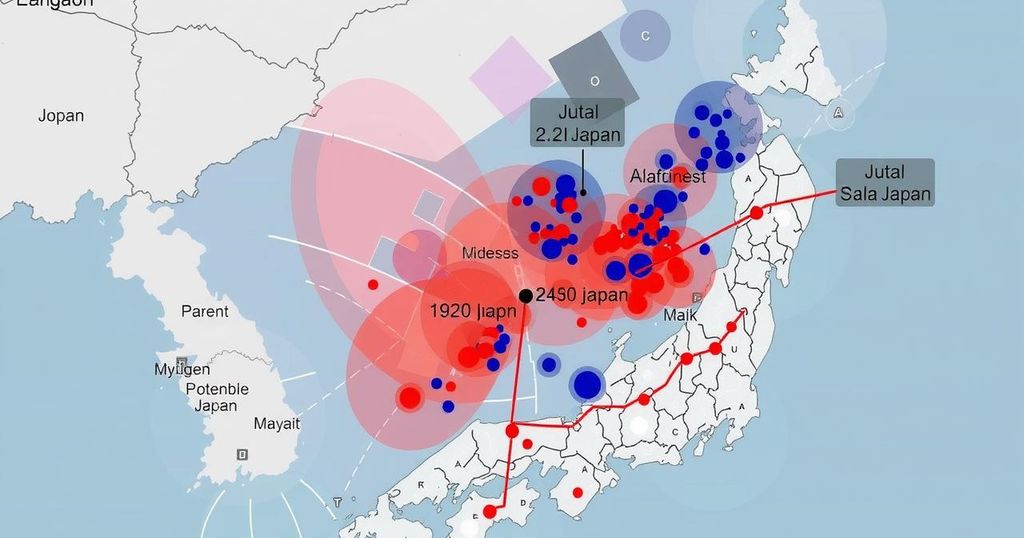Projected Increase in Earthquake-Related Deaths in Central Japan After New Year’s Disaster

The number of fatalities from the January 2024 earthquake in Ishikawa Prefecture is expected to rise as over 200 additional deaths await classification as quake-related. More than 500 fatalities have been reported, primarily due to post-disaster circumstances, including distress and conditions in evacuation centers. Eligible bereaved families may receive financial assistance under disaster condolence grants, while the backlog of applications continues to hinder recognition of these deaths.
As the aftermath of the severe earthquake that struck Ishikawa Prefecture on January 1, 2024, continues to unfold, the number of fatalities is anticipated to rise significantly. Currently, authorities indicate that over 200 additional deaths are awaiting verification as quake-related incidents. This tragic development follows a prior count exceeding 500 fatalities, with many lives lost as an indirect consequence, such as those in evacuation centers or due to distress stemming from the earthquake itself.
The recent catastrophic event, rated at magnitude 7.6, has further compounded the challenge of addressing public safety and welfare in the region. Since the quake, municipalities have struggled with processing applications for disaster-related death recognitions, with fewer than 20 cases processed monthly, resulting in a looming backlog. Recognized deaths thus far include approximately 230 individuals who died during or immediately following the earthquake, while another estimated 270 cases relate to post-quake circumstances.
A scrutiny of the certified post-quake fatalities in Ishikawa reveals that about 20 percent of these occurred three months or more post-disaster, notably affecting elderly individuals aged 70 and above. The contributing factors leading to these deaths predominantly involve distress from the earthquake, fear of aftershocks, and hardships experienced in evacuation accommodations. Reports also indicate that some post-disaster fatalities have been acknowledged in neighboring Niigata and Toyama prefectures.
The recognition of these deaths is crucial as it allows bereaved families to seek substantial financial assistance of up to 5 million yen (approximately $32,000) under the law governing disaster condolence grants. Meanwhile, a recent survey has highlighted that over 60 percent of residents in the quake-affected Noto Peninsula perceive minimal recovery following the disaster, underscoring the ongoing challenges faced in rebuilding lives and infrastructure in the aftermath of this devastating event.
On January 1, 2024, Ishikawa Prefecture and surrounding areas experienced a magnitude-7.6 earthquake, leading to widespread devastation primarily in the Noto Peninsula region. A year prior, another earthquake impacted this area, and the combined effects have resulted in significant loss of life, with fatalities expected to rise as more cases are reviewed. The distinction between deaths that occurred during the earthquake and those recognized as post-disaster is critical for compensation and support mechanisms, illustrating the multifaceted impacts of natural disasters on communities.
In conclusion, the tragic ramifications of the January 2024 earthquake in central Japan are projected to increase significantly, with over 200 additional applications for disaster-related deaths pending review. This disaster has profoundly affected the Ishikawa region, with many families grappling with loss and distress. The long-term psychosocial and infrastructural impacts necessitate concerted efforts to provide adequate support and facilitate recovery for affected residents.
Original Source: english.kyodonews.net








